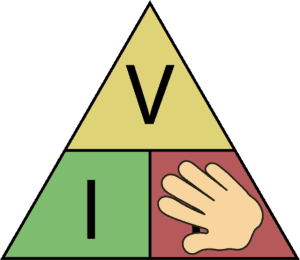I got this question from Awaji about the light-emitting diode (LED):

[Awaji]: How can I know the LED voltage and the current ratings of an LED? Also, how is the resistor of an LED chosen? Thanks
[Oyvind]:
Here are three different ways to find the LED voltage and current:
- The easiest way is to look it up in the datasheet, or the store where you bought it. Look for LED forward voltage and the Test Current.
- You could find the LED voltage by using a multimeter with a diode function.
- You could connect a battery to the LED and a potentiometer. Start with high resistance on the potentiometer and gradually decrease it until you have a nice brightness. Then measure the voltage over the LED, and measure the current going through the circuit.
How to choose a resistor for your LED
First, figure out the voltage that your LED needs by using one of the three methods described above.
Then figure out the current you want to flow through the LED. If you’re not sure, aim for somewhere between 1 mA and 10 mA.
A rule-of-thumb you can use with LEDs is that they will “grab” the voltage they need (if you have it set up correctly). This means that if you connect a 9V battery to a 2V LED with a resistor in series, the LED will have 2V across and the resistor the rest (7V).
This means you can calculate the resistor you need using Ohm’s law:

Get Our Basic Electronic Components Guide
Learn how the basic electronic components work so that circuit diagrams will start making sense to you.

You know the voltage across the resistor (ex 7V), and you know the current you want (ex 10mA/0.01A). To calculate the resistance you need, just divide the voltage by the current:
R = V / I
R = 7V / 0.01 A = 700 Ω
So you need a resistor of 700 Ω to get 10 mA of LED current.
The resistor that you place in series with an LED is called a current limiting resistor because it limits how much current that can flow.
More Light-Emitting Diodes (LED) Tutorials

Get Our Basic Electronic Components Guide
Learn how the basic electronic components work so that circuit diagrams will start making sense to you.
